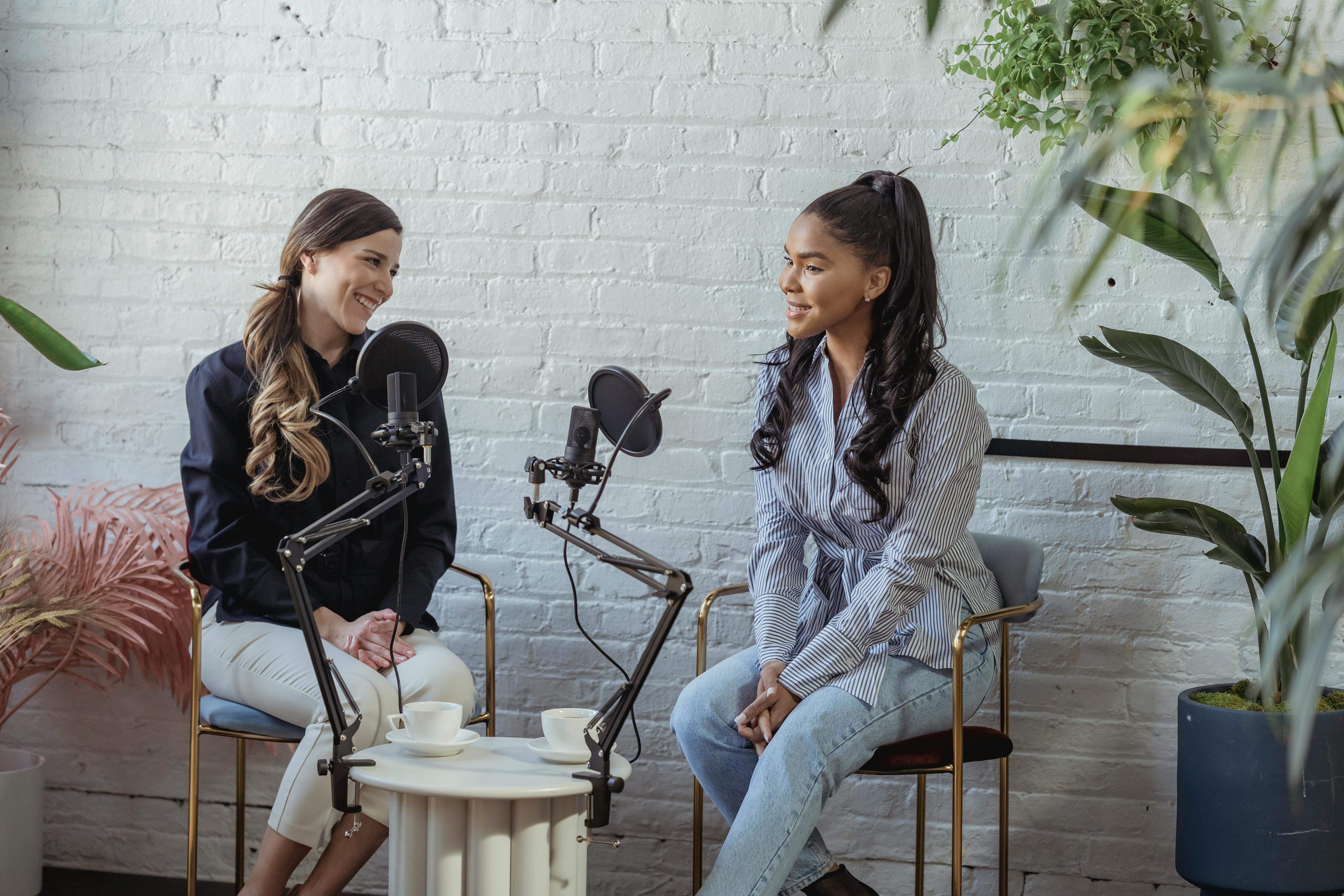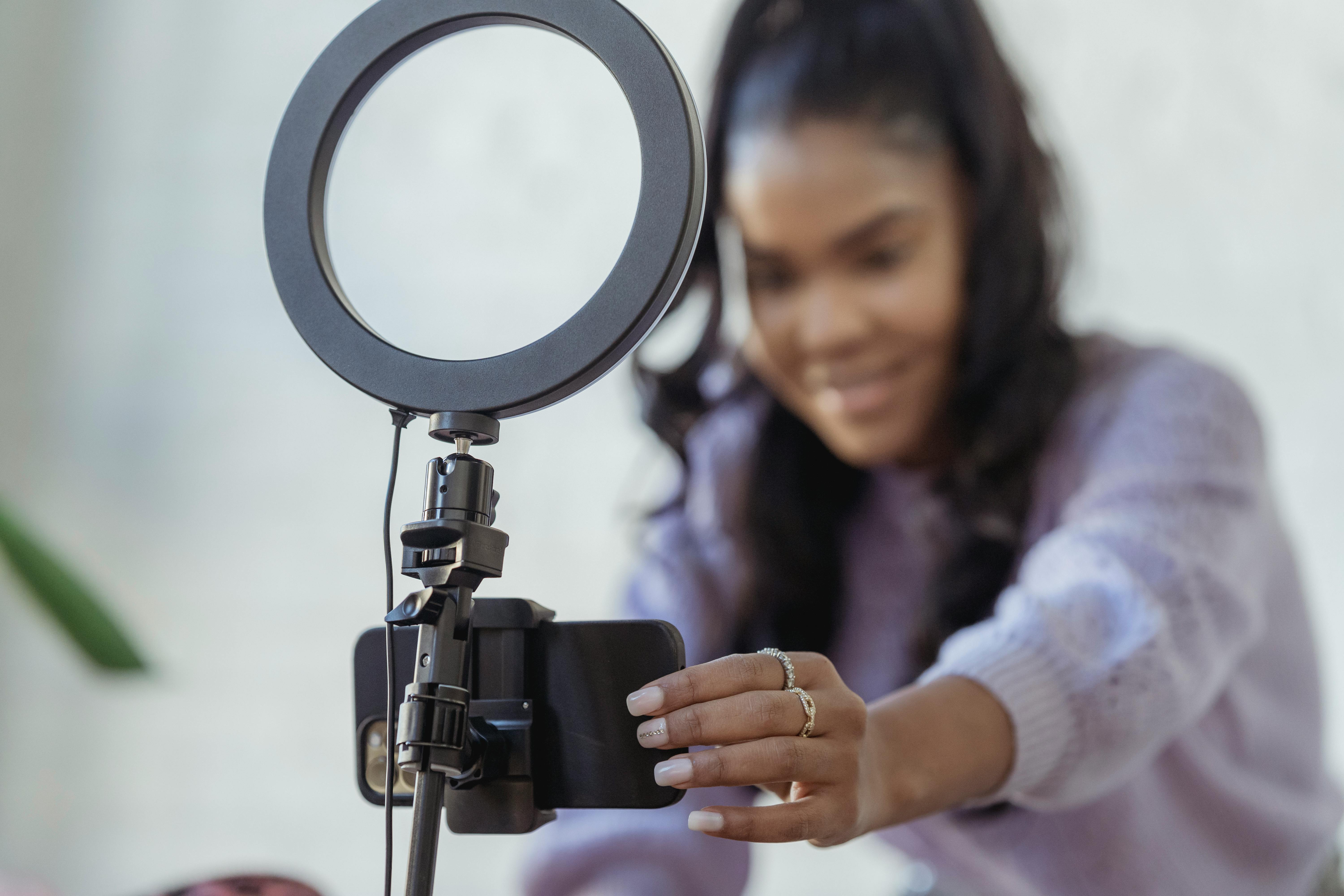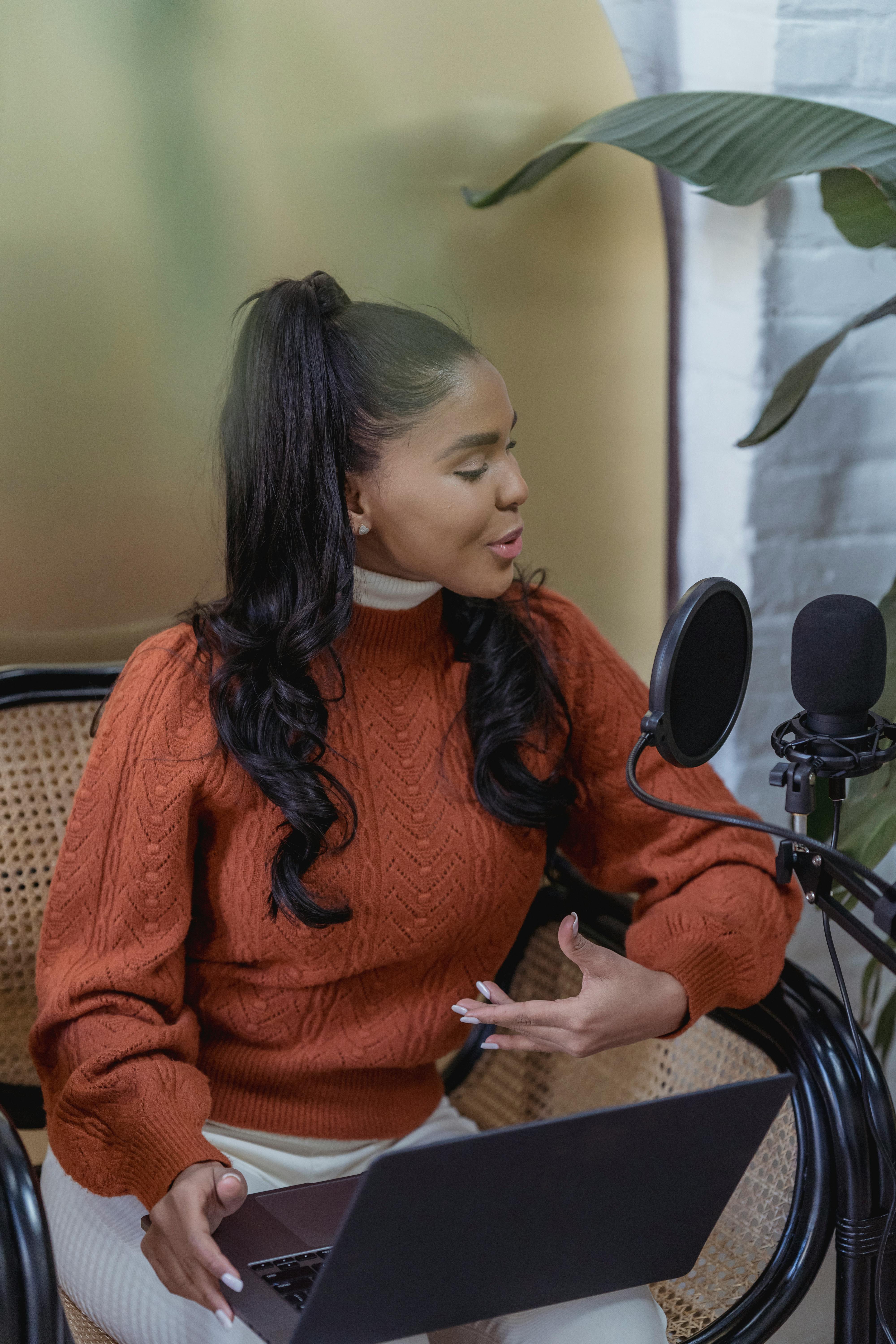Transform your podcast with the power of soundproofing! Whether you’re a seasoned podcaster or just starting out, creating a professional and high-quality audio experience is key to capturing and retaining your audience. Soundproofing plays a crucial role in achieving this, helping eliminate background noise, echoes, and unwanted sounds that can distract listeners. By investing in the right equipment, such as high-quality microphones, headphones, pop filters, and boom arms, and integrating acoustic treatment into your recording space, you can take your podcast to the next level. With brands like Shure, Rode, Sennheiser, and Focusrite leading the way, it’s easier than ever to achieve studio-worthy sound for your podcasting adventures.

Importance of Soundproofing for Podcasts
When it comes to podcasting, sound quality is key. No matter how fascinating your content may be, if your listeners are constantly battling background noise or struggling to hear your voice, they won’t stick around for long. That’s where soundproofing comes in. By taking steps to reduce background noise, improve audio quality, and enhance the overall listener experience, you can transform your podcast into a professional and engaging production.
Reducing Background Noise
Background noise can be a major distraction for podcast listeners. Whether it’s the hum of air conditioning, a car driving by, or even the sound of your own computer fan, these noises can be picked up by your microphone and make it difficult for your audience to focus on what you’re saying. Soundproofing your recording space is essential to minimize these distractions and create a clean and professional audio environment.
Improving Audio Quality
Soundproofing not only helps to reduce background noise but also improves the overall audio quality of your podcast. By eliminating echoes and reverberations, you can achieve a more crisp and clear sound. This allows your listeners to fully appreciate the nuances of your voice and the content you’re sharing.
Enhancing Listener Experience
When your podcast is free from background noise and the audio quality is top-notch, you create a more enjoyable experience for your listeners. By investing in soundproofing measures and using high-quality equipment, you demonstrate your commitment to delivering a professional and engaging podcast. This can help you build a loyal audience who will eagerly anticipate each new episode.
Types of Soundproofing Methods
Now that you understand the importance of soundproofing, let’s explore the various methods you can use to achieve optimal sound quality in your podcast.
Soundproofing Your Recording Space
The first step in soundproofing your podcast is to choose the right location for your recording space. Look for a room that is naturally quiet and away from any potential noise sources, such as appliances or busy streets. Once you’ve found the perfect spot, it’s time to focus on soundproofing the room itself.
To soundproof your recording space, pay attention to the walls and ceilings. Adding acoustic panels or soundproofing insulation can help absorb and block unwanted noise. Thick curtains or heavy blankets can also be used to cover windows and further reduce sound leakage. Don’t forget to address the flooring and doors as well – adding carpets and weatherstripping to doors can help minimize sound transmission.
Soundproofing Your Equipment
In addition to soundproofing your recording space, it’s important to consider the soundproofing of your equipment. High-quality microphones, headphones, and audio interfaces with good noise-canceling capabilities can make a world of difference in reducing background noise. Boom arms or stands, shock mounts, and pop filters can also help minimize vibrations and unwanted sounds that can disrupt your recordings.
Soundproofing Your Post-Production Process
Even after you’ve recorded your podcast, there are still steps you can take to improve its sound quality during the post-production process. By selecting the right recording software and mastering editing techniques, you can further refine your audio and eliminate any remaining background noise. Additionally, incorporating plugins and effects can help enhance the overall sound and create a professional, polished finish.

Soundproofing Your Recording Space
To achieve the best sound quality in your podcast recordings, it’s crucial to properly soundproof your recording space. Here are some steps you can take to make your recording environment as acoustically sound as possible.
Choosing the Right Location
When selecting a location for your recording space, look for a room that is relatively quiet and free from potential noise sources. Avoid rooms with thin walls or that are in close proximity to busy roads or loud appliances. Consider the layout of your house or office and choose a space where you’ll have the least amount of external noise interference.
Walls and Ceilings
The walls and ceilings of your recording space play a significant role in soundproofing. It’s recommended to use acoustic panels or foam to absorb sound reflections and echoes. These panels can be easily installed on the walls and ceilings, creating a more controlled and balanced sound environment. If you’re unable to install acoustic panels, adding heavy curtains or drapes can also help reduce sound reflections.
Flooring and Doors
In addition to the walls and ceilings, pay attention to your flooring and doors. Hard surfaces such as hardwood or tile can cause sound to bounce and create unwanted echoes. Consider adding carpeting or rugs to absorb sound vibrations and reduce the overall noise level. Weatherstripping your doors can also help minimize sound leakage and prevent outside noise from entering your recording space.
Windows and Ventilation
Windows are notorious for letting in outside noise, so it’s important to address them when soundproofing your recording space. Installing double-glazed windows or using window inserts can significantly reduce the amount of noise that enters your room. Additionally, make sure to properly seal any gaps or cracks around the windows to prevent sound leakage.
Selecting Soundproof Podcast Equipment
investing in high-quality podcasting equipment can make all the difference in achieving clear and professional sound. Here are some essential pieces of equipment to consider when soundproofing your podcast setup.
Microphones
When it comes to microphones, there are various options to choose from. Dynamic microphones, such as the Shure SM58 or the Audio-Technica ATR2100x, are known for their ability to reject background noise and focus on the desired sound source. If you prefer a condenser microphone, look for one with a cardioid polar pattern, such as the Rode NT1 or the Audio-Technica AT2035. These microphones are designed to capture sound from the front while minimizing unwanted noise from the sides and rear.
Headphones
Using headphones while recording and editing your podcast is essential for monitoring sound quality. Closed-back headphones, such as the Sennheiser HD 280 Pro or the Sony MDR-7506, are recommended for their ability to isolate sound and prevent bleed into the microphone. Look for headphones with a frequency response that accurately represents the full range of human hearing.
Audio Interfaces
An audio interface serves as the bridge between your microphone and your computer. Look for an audio interface with good preamp quality, such as the Focusrite Scarlett series or the PreSonus AudioBox, to ensure a clean and noise-free signal transfer. USB connectivity is convenient for most podcasters, but if you require more advanced features, consider an interface with Thunderbolt or PCIe connectivity.
Boom Arms/Stands
Using a boom arm or stand can help position your microphone properly and reduce handling noise. The Heil Sound PL-2T or the Rode PSA1 are popular choices for their flexibility and stability. Look for a boom arm or stand that is adjustable and easy to maneuver.
Pop Filters
Pop filters are essential for reducing plosive sounds, such as “p” and “b” sounds, that can cause distortion in your recordings. The Stedman Proscreen XL, Nady MPF-6, and Aokeo Professional Microphone Pop Filter are all reliable options that effectively minimize plosives.
Shock Mounts
Shock mounts are designed to isolate your microphone from vibrations and handling noise. The Rycote InVision USM, K&M 23850, and On-Stage MY-420 are popular shock mounts that provide excellent vibration isolation and help deliver clean and clear recordings.
Cables and Accessories
Investing in high-quality cables and accessories is often overlooked but can make a noticeable difference in sound quality. Brands like Mogami, Hosa, and Monster Cable offer reliable and durable cables that help minimize interference and ensure a clean audio signal.
By selecting the right podcasting equipment, you can reduce background noise and capture clear, professional sound. Taking the time to research and invest in reputable brands will ultimately enhance your podcasting experience.

How Acoustic Treatment Can Help
Acoustic treatment plays a crucial role in improving sound quality within your recording space. By implementing appropriate acoustic treatment, you can effectively control sound reflections, reduce reverberation, and minimize sound leakage. Here are a few ways acoustic treatment can help enhance your podcasting environment.
Absorbing Reflections and Echoes
When sound waves bounce off hard surfaces, they create reflections and echoes. These reflections can cause unwanted audio artifacts and impact the clarity of your recordings. By strategically placing absorptive materials, such as acoustic panels or foam, on the walls and ceiling of your recording space, you can minimize these reflections and achieve a more balanced sound.
Reducing Reverberation
Reverberation refers to the persistence of sound after the original sound source has stopped. Excessive reverberation can muddy your audio and make it difficult for listeners to understand your words. The addition of bass traps, diffusers, or acoustic panels can help absorb and diffuse sound waves, reducing reverberation and creating a tighter and more focused sound.
Minimizing Sound Leakage
Sound leakage occurs when sound escapes from your recording space and interferes with your recordings. This can be particularly troublesome if you’re recording in a noisy environment or if you live in close proximity to neighbors. By applying weatherstripping to doors, using window inserts, or sealing any gaps and cracks, you can minimize sound leakage and ensure that your recordings remain clean and isolated.
Proper acoustic treatment is essential for achieving optimal sound quality in your podcast recordings. By understanding the principles of sound propagation and applying appropriate treatments, you can create a well-controlled and acoustically pleasing recording environment.
Tips for Soundproofing Your Equipment
Having high-quality equipment is essential for achieving clear and professional sound in your podcasts. Here are some tips to soundproof your equipment and ensure top-notch audio quality.
Choosing the Right Microphone
When choosing a microphone, consider the polar pattern and its noise-canceling capabilities. Dynamic microphones with a cardioid polar pattern, like the Shure SM7B or the Audio-Technica ATR2100x, are great options for podcasting because they focus on capturing sound from the front while minimizing unwanted noise from the sides and rear.
Using Shock Mounts and Pop Filters
To reduce handling noise and eliminate plosives, using shock mounts and pop filters is essential. Shock mounts, such as the Rycote InVision USM or the K&M 23850, isolate your microphone from vibrations and handling noise, while pop filters, like the Stedman Proscreen XL or the Nady MPF-6, minimize plosive sounds that can produce unwanted distortions.
Proper Cable Management
Messy cables can not only be visually unappealing but can also introduce interference and noise into your audio signal. Invest in cable management solutions, such as cable clips or cable sleeves, to keep your cables organized and prevent them from picking up unwanted noise.
Isolating Your Equipment
External vibrations can cause unwanted noise to be picked up by your microphone. To isolate your microphone from these vibrations, use a shock mount and place your microphone on a stable surface, such as a microphone stand, to prevent it from being affected by the vibrations of your desk or computer.
Implementing these tips can significantly reduce background noise and improve the overall sound quality of your podcast recordings. By taking the time to properly soundproof your equipment, you’ll ensure a more professional and engaging podcast experience for your listeners.

Soundproofing Your Post-Production Process
In addition to soundproofing your physical recording space and equipment, optimizing your post-production process is crucial for achieving the best sound quality in your podcast. Here are some tips to help you enhance your audio during the editing stage.
Selecting the Right Recording Software
Choosing the right recording software can greatly impact the overall audio quality of your podcast. Adobe Audition, Audacity, and Pro Tools are popular options that offer a range of editing features and capabilities. Experiment with different software programs to find the one that best suits your needs and preferences.
Editing Techniques to Improve Audio Quality
During the editing process, there are various techniques you can use to improve the audio quality of your podcast. Adjusting levels and removing background noise through noise reduction tools can help clean up your recordings. Additionally, using equalization to balance frequencies and applying compression to control dynamic range can further enhance the clarity and consistency of your audio.
Enhancing Audio with Plugins and Effects
Plugins and effects can be powerful tools for enhancing your podcast audio. Whether you’re adding a touch of reverb to create a more immersive listening experience or using a vocal enhancer to bring out the richness in your voice, experimenting with different plugins and effects can elevate the overall quality and impact of your podcast.
By incorporating these post-production techniques into your podcast editing workflow, you can refine your sound and create a polished final product. Take the time to experiment with different software, techniques, and plugins to find the combination that works best for your unique podcasting style.
Budget-Friendly Soundproofing Solutions
Soundproofing your podcast doesn’t have to break the bank. There are budget-friendly methods and equipment options available that can help you achieve excellent sound quality without draining your wallet. Here are some cost-effective solutions to consider.
DIY Methods for Soundproofing
If you’re willing to put in a little extra effort, there are many do-it-yourself methods for soundproofing your recording space. Using heavy curtains, blankets, or foam panels can provide effective sound absorption without a hefty price tag. Additionally, repurposing materials like egg cartons or moving blankets can help reduce sound reflections and echoes.
Affordable Equipment Options
While it’s true that high-quality podcasting equipment can be pricey, there are affordable options available that still deliver great sound. Consider brands such as Audio-Technica or Audio-Technica for microphones, Sennheiser or Sony for headphones, and Focusrite or Behringer for audio interfaces. These brands offer budget-friendly options without sacrificing performance.
Alternative Materials and Resources
When it comes to soundproofing, you don’t always have to rely on specialized products. Everyday materials can also offer effective sound absorption. For example, using foam mattress toppers or thick blankets as makeshift acoustic panels can make a noticeable difference in reducing sound reflections.
By getting creative and exploring alternative methods and materials, you can soundproof your podcast on a budget without compromising on sound quality.

Common Mistakes to Avoid
While soundproofing your podcast, it’s important to avoid common mistakes that can negatively impact your audio quality. By being mindful of these potential pitfalls, you can ensure a smooth and professional podcasting experience.
Neglecting Proper Equipment Setup
Even with high-quality equipment, improper setup can lead to subpar audio quality. Take the time to familiarize yourself with your equipment and ensure that everything is properly connected and configured. Pay attention to microphone placement, headphone levels, and audio interface settings to achieve optimal sound.
Overlooking Acoustic Treatment
Acoustic treatment plays a crucial role in achieving excellent sound quality. Neglecting to address sound reflections, echoes, and reverberations in your recording space can result in muddiness and poor audio clarity. Make sure to invest in appropriate acoustic treatment materials and properly set them up in your recording space.
Ignoring Potential Noise Sources
Identifying and eliminating potential noise sources is essential for a clean and professional-sounding podcast. Take the time to assess your recording environment and identify any sources of background noise, such as fans, appliances, or traffic. Addressing these sources before you start recording can save you a lot of time and frustration in the editing process.
By avoiding these common mistakes, you can ensure that your podcast is free from distracting background noise and consistently delivers high-quality sound.
Conclusion
Soundproofing is an essential aspect of podcasting that can greatly enhance the overall listener experience. By taking steps to reduce background noise, improve audio quality, and create a clean and professional sound environment, you can transform your podcast into a captivating and engaging production.
Investing in quality podcasting equipment, soundproofing methods, and post-production techniques is worth it. By choosing the right location, soundproofing your recording space, selecting high-quality equipment, and optimizing your post-production process, you can take your podcast to the next level. Don’t overlook the importance of acoustic treatment, and make sure to avoid common mistakes that can negatively impact your audio quality.
Remember, podcasting is all about creating a connection with your listeners. By prioritizing soundproofing and striving for excellent audio quality, you demonstrate your commitment to delivering a professional and enjoyable podcast experience. So, take the time to soundproof your podcast and reap the rewards of improved audio quality and an enhanced listener experience.